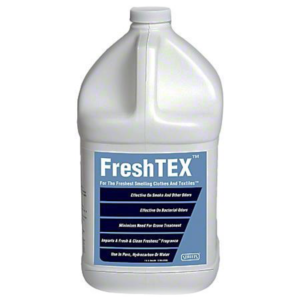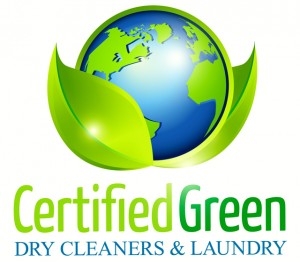From A to Z
 There are a wide variety of services available from most drycleaners:
There are a wide variety of services available from most drycleaners:
Alterations: Professional dry cleaners are full-service clothing care specialists. Alterations are one of the many services they may offer in addition to dry cleaning. From a simple shortening, lengthening, take waist in or let seat out; to a full reline of a coat, suit, dress, or skirt; to a panel replacement of a natural skin; your professional dry cleaner has a seamstress/tailor for every circumstance.
Buttons: Dry cleaners repair loose buttons or sew on new ones, whether or not they were damaged or missing when they arrived at the plant.
Convenience: All you have to do is give your clothes to your route representative. Your cleaner takes care of the rest. Why waste hours doing laundry and ironing when you get quality and convenience with dry cleaning?
Dry cleaning, the process itself: Dry cleaning uses fluids to remove soils and stains from fabrics. Among the advantages of dry cleaning is its ability to dissolve grease and oils in a way that water cannot. Natural fibers such as wools and silks dry clean beautifully, but can shrink, distort, and lose color when washed in water. Synthetic fibers like polyester also respond well to dry cleaning, whereas they can retain oily stains after washing. Dry cleaning helps to return garments to a “like-new” condition using precautions to prevent shrinkage, loss of color, and change of texture or finish.
Expertise: From fashions and fabrics to stain removal to the latest cleaning technologies, drycleaners have the expertise to clean your clothes right. Why do it yourself or settle for a second-rate job from a so-called “home dry cleaning kit” when you could trust it to an expert?
Finishing: Thanks to special pressing equipment, professional finishing gives garments a crisp, wrinkle-free, like-new appearance that can’t be beat. There are no rumples or creases out of place. Plus, by taking your clothes to the drycleaner, you don’t have to spend your weekend standing over an ironing board and a hot iron.
Garment storage: Have you got too many clothes and too little space? Some cleaners provide garment storage for out-of-season items. The garments are stored in a vault, which offers protection from insects, fire, burglary, flood, and mildew damage. Furs used to be the primary storage item, but today cleaners receive woolens, household items, and other items to store too.
Household textiles: Cleaners don’t just clean clothes. Many cleaners also process household items such as blankets, comforters, decorative pillows, rugs, and even draperies.
Inspection: Before they return a garment to you, quality cleaners conduct an inspection to make sure your order has met their own and your expectations. If they spot a problem, the garment gets sent back to receive further attention. Safeguards like this help ensure that your clothes will look their best.
Knowledge of fabrics and fashions: You may know what rayon, silk, and cotton are, but what about angora, faille or seersucker? There are numerous fabrics and fibers that drycleaners must know about in order to provide the best care for your garments.
Laundry: Dry cleaners also have commercial laundry departments where they process shirts, cotton pants, and bulk goods. With the convenience and superior level of pressing that comes with commercial laundry, your business casual and casual attire will look their best.
Moth Damage: Clean clothes are the first step to preventing insect damage from moths, as well as silverfish, crickets, and ants. Insects will feed on any fiber, especially if stains are present.
Neckties: Ties are often made of delicate fabrics, such as silk, as well as various other components. Due to the nature of the tie construction, this item should only be cared for by a professional; cleaned in a net bag and hand pressed.
Odor removal: Some cleaners specialize in odor removal and flood and fire restoration of water- or smoke-damaged items. These cleaners use ozone generators to do an ozone treatment. The contact between ozone and the odors embedded in the textiles causes oxidation to reoccur, resulting in the elimination of the odors and the release of oxygen. This is a safe and effective process.
Preservation: Many cleaners specialize in the preservation of wedding gowns, christening gowns, and other family heirlooms. Preservation is a special type of storage that helps prolong the life of a garment for years and years. There are two different levels of preservation; and a special designation as a preservation specialist.
Stain removal: Dry cleaners use complex procedures and special stain removal chemicals to remove stains. Stains are divided into two major categories: solvent-soluble and water-soluble. Different stains require different treatments, which stain removal technicians are trained to administer. Why risk a disaster using an over-the-counter “all-purpose” stain removal product or trying a “home remedy” when you could rely on your drycleaner’s expert stain removal abilities?
Value: Cleaners provide a good value to their customers through quality workmanship and excellent customer service. By providing our professional services, we also give you extra free time to do the things you’d rather be doing instead of washing, drying, and ironing your clothes.
Wet cleaning: Wet cleaning is a gentle form of cleaning that cleaners may choose to process sensitive textiles such as wool, silk, rayon, and linen. It gives dry cleaners more flexibility in processing items that may not withstand a dry cleaning process or that have soils that would be better removed in water. For example, many items, such as wedding gowns, are often trimmed with plastic beads or sequins that may dissolve or discolor in dry cleaning but generally perform well in wet cleaning. Items with large beverage stains or hem dirt & grime are also more likely to come clean in a wet cleaning process.
Extend the life of your garments: Contrary to the belief of some, frequent cleaning does not damage clothes. Frequent cleaning extends the life of a garment by removing stains and ground-in dirt and soils that can cause fiber abrasion and deterioration.
Yellowing: Frequent cleaning removes stains that, if left untreated, could oxidize and yellow. Exposure to heat or the passage of time can cause stains from food, beverages, and other oily substances to oxidize and turn yellow or brown, much the way a peeled apple turns brown after exposure to air. Once they become yellow or brown, these stains become much more difficult to remove and often cannot be removed.




